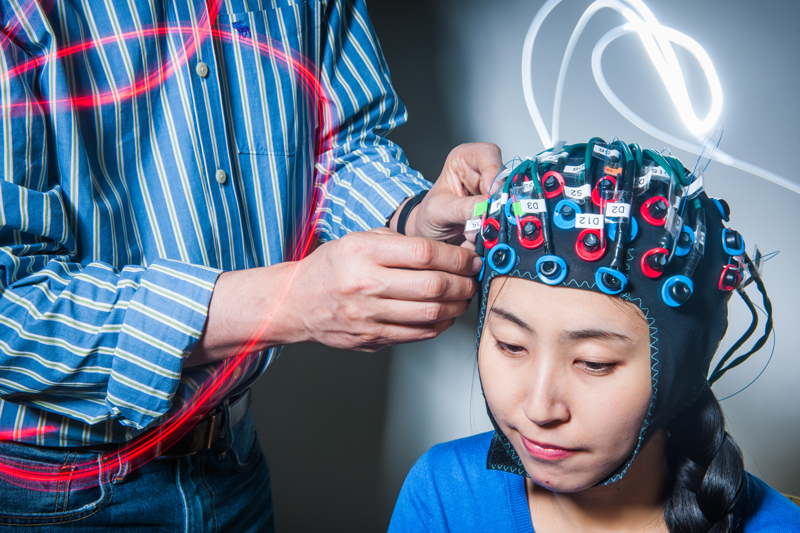Nature Knows and Psionic Success
God provides
Lighting Up the Brain

Even family pets can inspire his inventive spirit. Whenever Boas’ wife traveled for work, she’d always call to make sure the cats were safely back inside for the night. Rather than policing the kitty door, Boas started puttering. He sketched out a system, built around an open-source microcontroller, to automatically log each cat’s return and report back. “He decided to build us, not a simple camera, but a sensor that detects and recognizes which cat is entering by the spectral signature of their fur,” says his wife, Maria Angela Franceschini . As Boas tinkered with his tabby tracker, he gently encouraged the pets in and out of the door—over and over again. “He terrorized my cats,” jokes Franceschini, also a leading neurophotonics researcher and an associate professor at Harvard Medical School . “And there were wires everywhere. You have no idea how many projects he starts.” “David is the pioneer of techniques and methods to use light to interact with the brain.” The Neurophotonics Center, the first facility of its kind in the United States and only the second in North America, pulls in 30 faculty from fields as diverse as biology, mechanical engineering, brain sciences, and nanomedicine. Its mission, says Boas, who formerly taught at Harvard Medical School and was the founder of the Optics Division of the Martinos Center at Massachusetts General Hospital (MGH), is to cultivate technologies that give researchers new insights into the brain. Most of Boas’ work is funded by the National Institutes of Health (NIH) and feeds into its ambitious BRAIN Initiative , a decade-long, multibillion-dollar project to speed the development and application of innovative neurotechnologies. Since opening in fall 2017, the BU Neurophotonics Center has started studies analyzing the brain as it recovers from a stroke, confronts autism, and slides into dementia. […]
Click here to view full article
